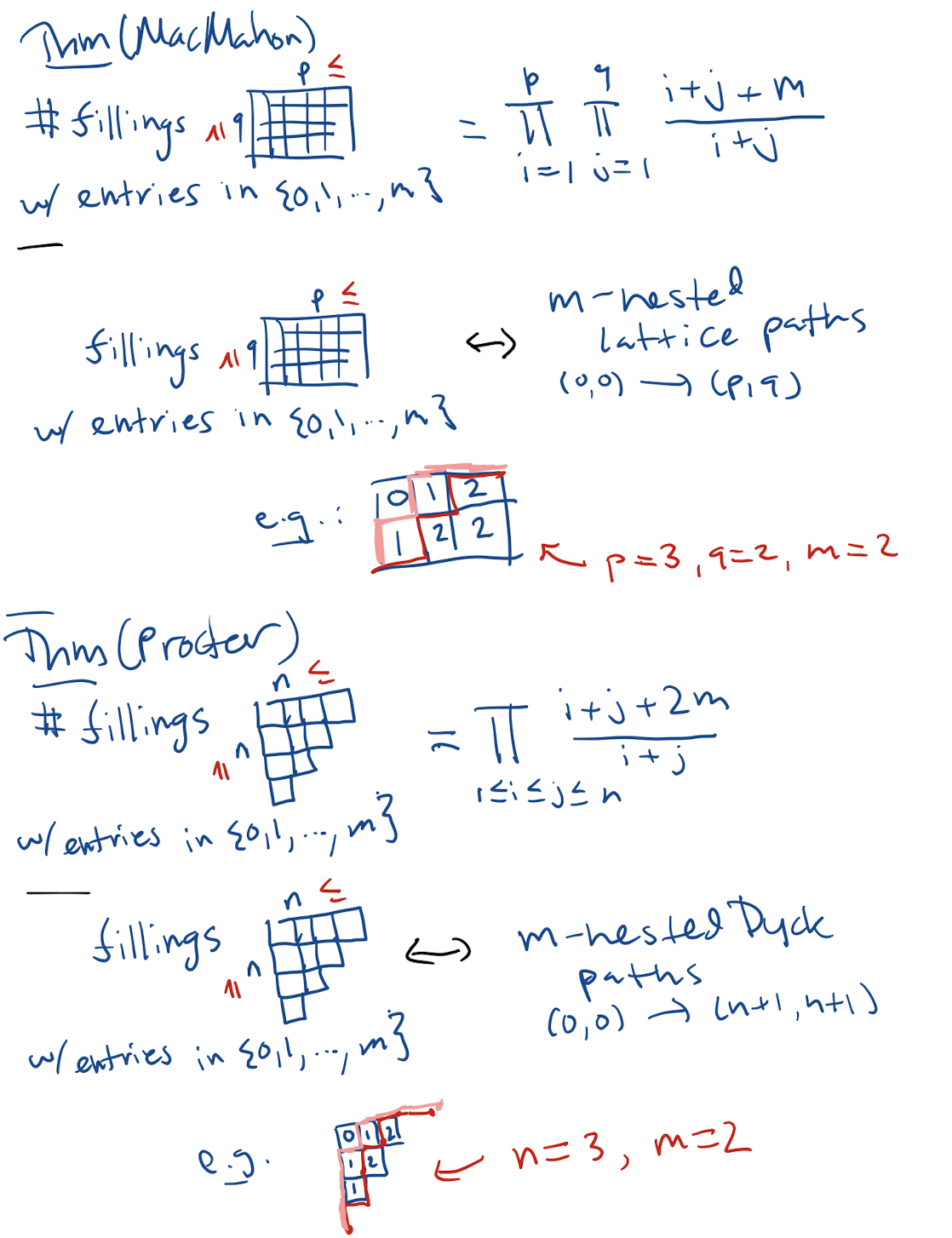Using horizontal steps $(1,0)$ and vertical steps $(0,-1)$, consider the lattice paths starting from $(0,q)$ and reaching $(p,0)$ with $p$ horizontal and $q$ vertical steps. The set of such paths $\frak{C}_{p,q}$ has cardinality $\binom{p+q}p$, which is ordered by "dominance": a path $\pi$ dominates $\pi'$ if $\pi'$ lies entirely "weakly" between $\pi$ and the coordinate axes. Letting $w(\pi)$ be the number of paths dominated by $\pi$, Krewaras–Niederhausen show in Solution of an Enumerative Problem Connected with Lattice Paths the following enumeration (these form a triangle for Narayana numbers) $$\sum_{\pi\in\frak{C}_{p,q}}w(\pi)=\frac{(p+q)!(p+q+1)!}{p!q!(p+1)!(q+1)!}.$$
Let's look at Dyck paths: staircase walks from $(0,0)$ to $(n,n)$ that lie "weakly" below the diagonal $y=x$. The number of such Dyck paths $\mathcal{C}_n$, of order $n$, is given by the Catalan number $C_n=\frac1{n+1}\binom{2n}n$.
Given $\pi\in\mathcal{C}_n$, let $w(\pi)$ be the number of Dyck paths $\pi'\in\mathcal{C}_n$ that lie "weakly" above $\pi$. Now, in a similar vain, I like to ask:
QUESTION. Is there anything known about the enumeration $$\sum_{\pi\in\mathcal{C}_n}w(\pi)=?$$

